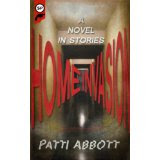From the Detroit Free Press, Robin Boyle
Detroit Mayor Mike Duggan recently introduced the idea of rebuilding
Detroit around the concept of the 20-minute neighborhood, where folks
can walk or bike to everything they need outside of work.
Great idea, but could it work in Detroit?
For
those who have never heard of it, a 20-minute neighborhood is an
active, safe, walkable, convenient, predominantly residential
neighborhood. A place where people can get most of their day-to-day
goods and services — shopping with good food, access to transit, parks
and schools — within a 20-minute walk. According to the Portland Plan of
2009, 20-minute neighborhoods have three basic characteristics: a
walkable environment, destinations that support a range of basic living
needs and residential density. Or as they say in real estate:
“rooftops.”
This concept is certainly not new. Before the turn of
the 20th Century, before the automobile, the “walkable neighborhood” was
the norm. And even in the 1920s the idea of the “neighborhood unit,”
where most services would be available within about a quarter of a mile,
was the basic building block of the U.S. suburb. But how things change.
By
WWII, and the emergence of widespread car ownership, the city was being
stretched by lower and lower density development. By the 1950’s the
auto-dependent suburbs were on over-drive and the very thought of
walkability was far from the minds of the developers or the home buyers.
The two or even three-car garage was far more important than the
sidewalk, or the neighborhood store. Need a quart of milk or a pound of
sugar? No problem. Jump into the car, scoot down the cul-de-sac and
drive three miles to the A&P or Kroger.
But for many that
suburban idyll is changing and the new home buyers, the millennials,
want to find a tighter, more dense, more interconnected and certainly
more walkable place to put down their roots. And the mayor sees that
sort of place, that authentic urban neighborhood, as a model for
Detroit’s recovery.
Can this work? Perhaps. Where there’s existing
residential density, close to some shops, a local park and perhaps an
elementary school then the Portland conditions will hold. So the mayor’s
initial target neighborhoods: L6 (Livernois and McNichols), Southwest
Detroit and West Village on the east side might work. But the key to
extending the concept is density. Are there enough households, with
sufficient disposable income, to sustain the shops, the local services?
Are there enough children to keep the school open and thriving?
Herein
lies the rub. The 20-minute neighborhood needs a residential density of
somewhere between 15 and 20 households per acre to support local
retail. Outside of the downtown/Midtown corridor and a select number of
more dense, occupied neighborhoods, most of Detroit has a lower
residential density.
So is the idea dead on arrival? I’d argue not
so, but Detroit’s neighborhood renewal needs to be packaged and sold in
a different way. Twenty-minute walking access to shops and transit will
likely take a while so the benefits of upgrading existing vacant homes,
of filling empty lots and building some medium-density housing needs to
be sold on other, noncommercial, benefits of density. The benefits of
walkability and improved health and well-being should be highlighted.
Sustainability, recreating a sense of place and building a safe,
welcoming community for the young and old alike can all be promoted as
authentic advantages of bringing density back to Detroit.
When the rooftops come back, shops and service are not far behind.
Robin Boyle is a professor of urban planning at Wayne State University.
Does your nearest city offer this option? Is there any planning going on for the desire of younger people to live this way. Detroit is a sprawling city with large areas vacated for various reasons. Downtown has not been a place where people chose to live until very recently. What is your nearest city like?
Monday, June 20, 2016
Subscribe to:
Post Comments (Atom)

















5 comments:
Well, our neighborhood certainly fits the profile. It's a three block walk to the avenue, and if we wanted to we could get anything we need in that area - two elementary schools and a high school, dozens of restaurants, bars, banks, drug stores, parks, all kinds of doctors, you name it. The movie theater is a little outside that walking distance (say, 30 minutes rather than 20). We even have three Starbucks!
My suburban Detroit neighborhood almost does. Once I walk about a mile-everything on this list is there. But within that mile, there is nothing. In GP, we had it. But no movies within 10 miles. Here there are three theaters within ten minute ride.
For the non-Starbucks lovers, I should add that we have several independent coffee places too.
I see your point, Tim. Always a problem. But Detroit has no upper middle class at all. The idea would be to get it some, I think. The average Detroiter has no car. They are stuck in neighborhoods hollowed out by poverty, horrible schools.
Yep. I live in an inner city suburb of Adelaide in South Australia (it's in the ring of suburbs outside what you guys would call Downtown - there's a ring of parklands between us and that). I've got a decent medical centre, 2 supermarkets, multiple small speciality shops, the local council's head office which also houses a community hall/theatre that is well used,, a post office, a cinema, 4 bank branches, several dozen cafes and restaurants, and 5 really nice parks and a public swimming pool all within 20 minutes walk, There's also a campus of a Catholic primary school and a government primary school also within the same radius. The nearest high school is probably just outside the 20 minute walk but it is on 2 different bus routes which are well served. Most importantly for me there's even a book shop and a library within the same radius. My home is small - in a block of units - but it has everything I need and I can live with the noisy neighbours and lots of traffic which are other downsides of living in higher density areas. I am actively involved with the local residents association - a block of which wants people like me - people prepared to live in medium or high density living rather than the quarter acre blocks which most of our city is full of - to disappear. But we are slowly winning. At present I still have a car which I need for work and for visiting my elderly father and taking him to medical appointments but there will come a point when I won't need it (ride shares and Uber have not taken off here yet but they will). The area is a mix of residents - some government housing, a lot of students, some 'old families in their $2million dollar homes and a bunch of people like me. I love it all.
Post a Comment